International Steel Prices
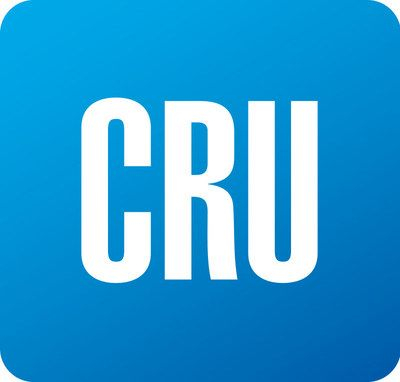
CRU: China Drives the World Higher
Written by CRU Americas
March 16, 2021
By CRU Principal Analyst Matt Watkins from CRU’s Global Steel Trade Service
International prices have rebounded in March from a dip that happened in February (see chart 1). Larger m/m gains have occurred in flats than in longs, which have been more impacted by a pullback in scrap costs, but almost all prices are up significantly.
Prices pushed higher as it became clear that China had come back strongly from its New Year holiday. Export prices from China jumped upward immediately after the break (see chart 2) and although these have leveled off more recently, they remain very high.
Rising Import Prices Push Up Domestic Markets
Higher Chinese export prices are supporting higher prices across the wider Asian region and in turn higher export prices from key global suppliers such as the CIS and Turkey. As the temporary threat of a return of price-competitive global imports has receded, domestic mills in several regions have felt empowered to push through further price increases (see chart 3).
This process has its limits. In the USA in particular the scale of domestic price increases over recent months has been such that buyers are actively looking to the import market, even including S232 tariffs and other duties that may be payable. A wave of import volumes is on the way and will arrive in the U.S. over the coming months. Elsewhere this dynamic is not yet so evident. In Europe, import volumes were very low in 2020 and the region’s buyers have become more dependent upon domestic supply. European prices are now heading up rapidly as these buyers are presented with few, if any, price-competitive options.
Margins at Exceptional Highs
Outside China, steel mill margins continue to grow. Spot profitability has reached truly exceptional highs (see chart 4) for which the only historical comparator is 2008. Chinese margins are modest in comparison, though positive and sustainable. Much of the difference comes from China’s higher cost base. China’s mills are paying higher coal costs following the decision to discourage Australian coal. And the global netback system of calculating iron ore prices from a CFR China benchmark is, at today’s high freight rates, providing a relative benefit to steel mills outside China.
Outlook: Near-term Prices Set to Stay Strong
Last month, we highlighted that prices could be supported for longer if Chinese demand was strong after New Year. This is now the case. The near-term outlook is robust. Chinese demand remains strong, for example with recent data points on car and yellow goods production coming out at high levels.
Not only that, but in China as well as many other parts of the world we are entering what is historically a seasonally strong quarter for demand (see chart 5). It is possible that the recovery from lockdowns will in some way affect this normal seasonal pattern, but it is likely that warmer northern hemisphere spring weather will drive strength in outdoor steel demand such as in construction. As such we do expect to see a seasonal pickup.
At the same time, while steel production in many parts of the world continues to rise following last year’s extensive round of idlings and in response to record available margins, in China the government is pushing back on output growth. There have been a set of short-term environmental measures imposed in Tangshan, backed up by some spot government inspections, but there is also a longer-dated goal to reduce steel output in 2021 and more widely to continue China’s efforts to reduce environmental pollution.
For the remainder of 2021, we expect to see y/y falls in Chinese finished steel production (see chart 6). As a base case, we also expect that demand growth will slow as stimulus tapers. This will create a supportive environment for prices, though not necessarily one in which there will be further upward surges. But if demand were to surprise to the upside, it could see China return strongly to the import market this year, which would be likely to keep global prices stronger for longer.
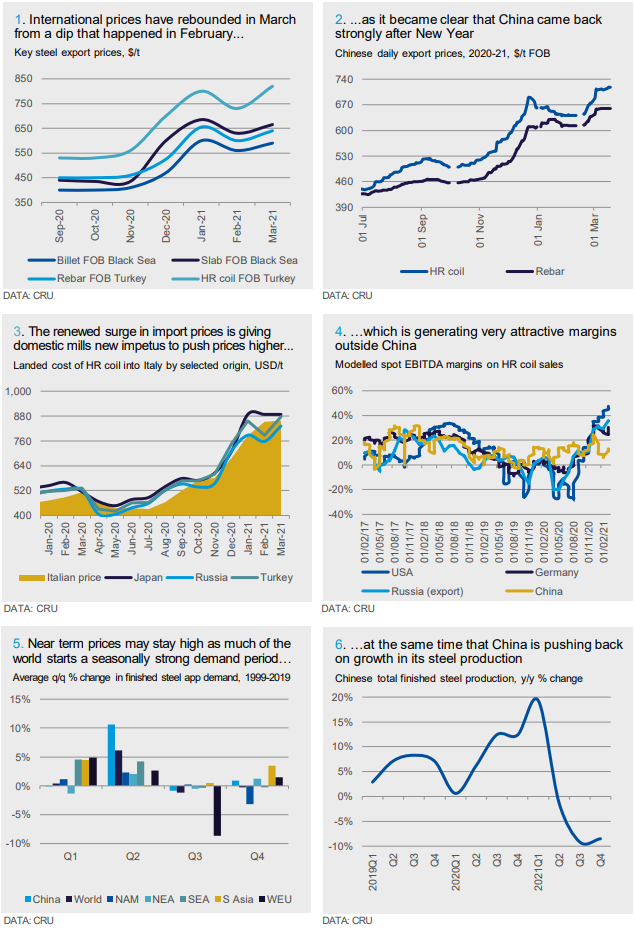
Request more information about this topic.
Learn more about CRU’s services at www.crugroup.com
CRU Americas
Read more from CRU AmericasLatest in International Steel Prices
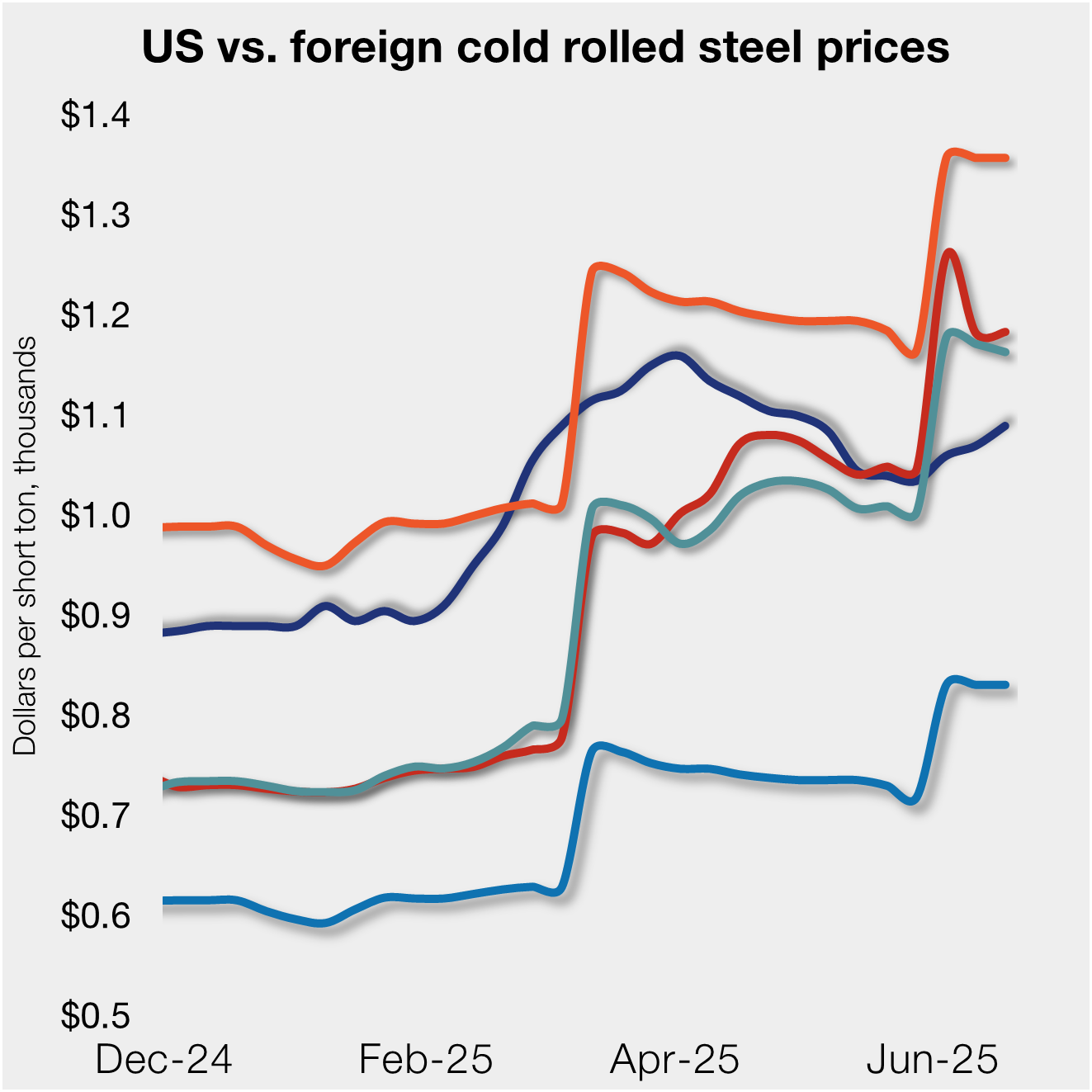
Higher US CR prices inch closer to EU, Japanese tags
US cold-rolled (CR) coil prices continued to tick higher this week, while offshore markets were mixed.
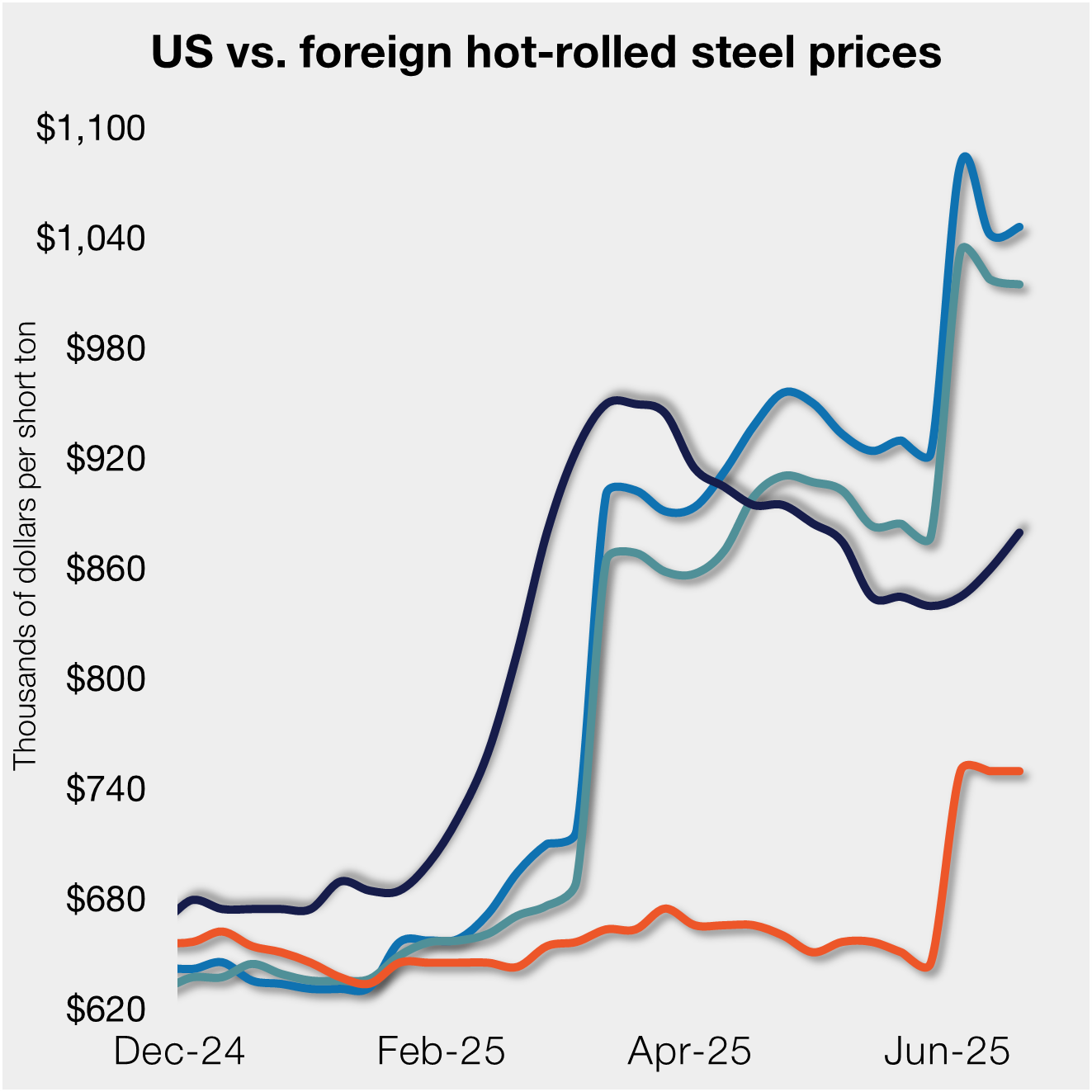
Stacked S232 keeps US HR prices below EU
US hot-rolled coil prices crept up again this week but still trail imports from Europe.
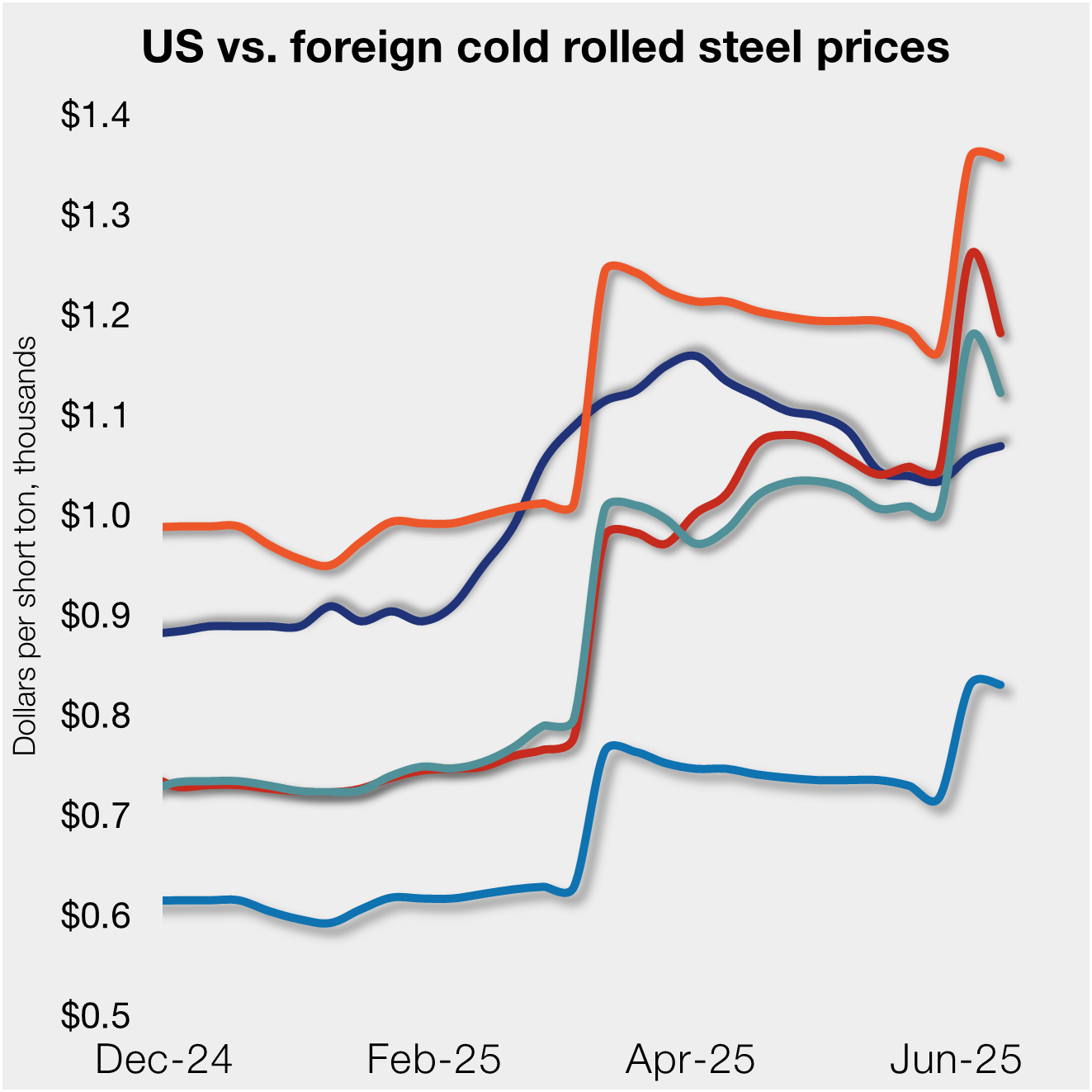
Doubled S232 lifts EU, Japanese CR prices over US tags
US cold-rolled (CR) coil prices edged up again this week, and most offshore markets moved in the opposite direction. But the diverging price moves stateside vs. abroad did little to impact pricing trends. The bigger impact was from Section 232, which were doubled to 50% as of June 3. The higher tariffs have resulted in […]

CRU: Sheet demand remains weak, tariff changes again alter markets
Subdued demand has continued to weigh on steel sheet prices globally.
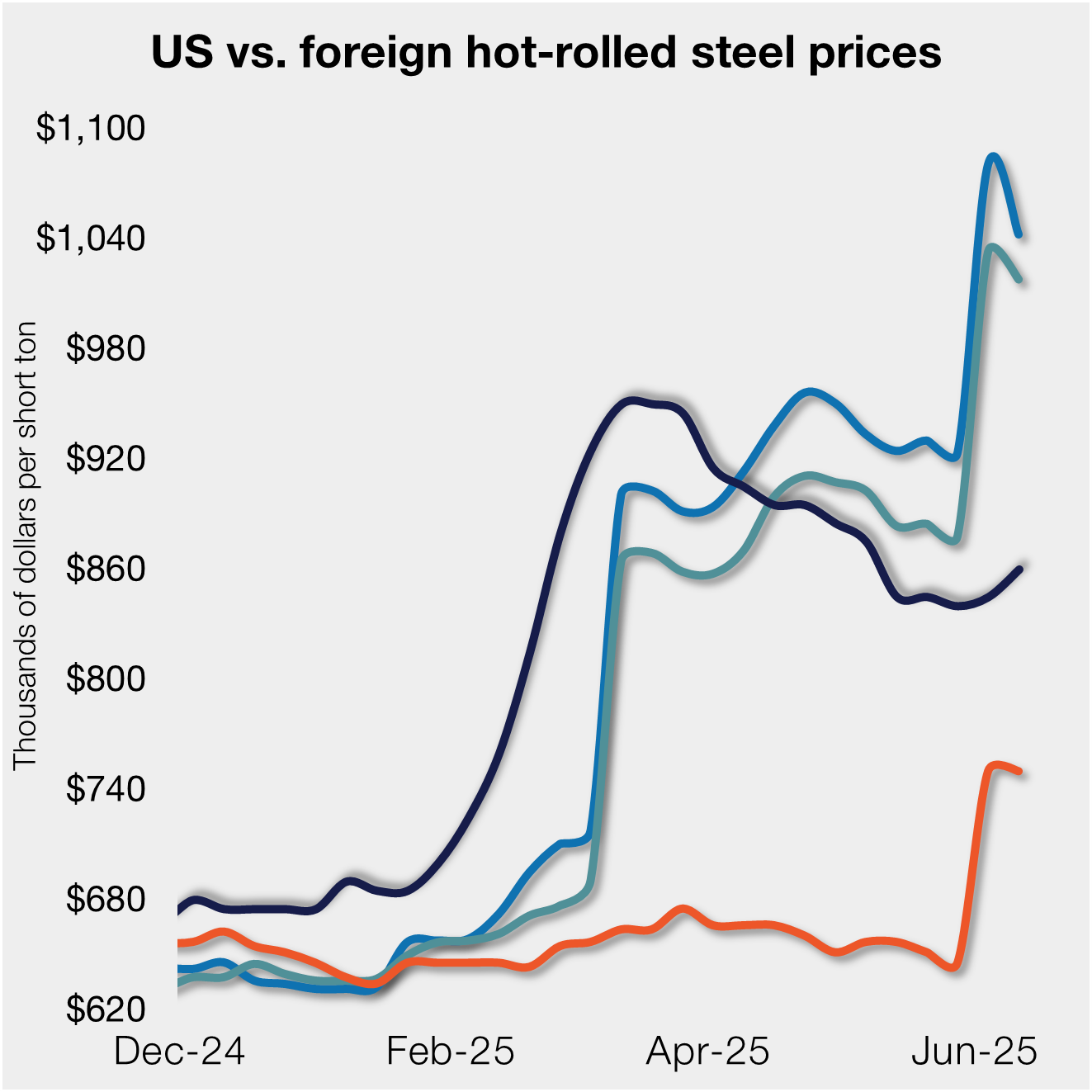
Higher S232 keeps US HR prices at a discount to EU
Domestic hot-rolled (HR) coil prices edged up marginally again this week, while offshore prices ticked down.
